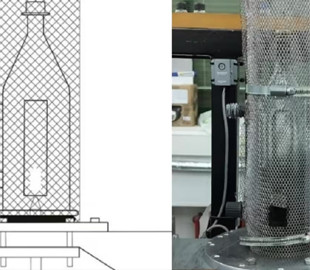
Scientists from the University of Córdoba presented a new prototype that could be a significant step on the way to mass production of graphene. This material, first synthesized in 2004, has unique properties such as high strength, flexibility and lightness. However, there is still no cheap and sustainable method to produce it on an industrial scale.
New research published in the Chemical Engineering Journal presents a technological development that increases graphene production by more than 22% while maintaining high quality. This development is based on plasma technology, which uses partially ionized gas to split organic molecules and create graphene.
One of the key advantages of plasma technology is its energy environment, which allows for easy splitting of organic molecules. The team used this technology to split ethanol and rearrange the molecule's carbon atoms, resulting in graphene.
The innovative achievement of the research is the optimization of the energy consumption of the process, which allowed to increase the production of graphene. The group's previous research showed that almost 43% of the energy supplied was dissipated and “wasted”. To avoid this loss of energy, the researchers built a Faraday cell around the plasma — a metal mesh that acts as an electromagnetic shield.
Thanks to this shielding, which makes the most of the plasma energy, graphene production increased from 4.3 milligrams per minute to 5.2 milligrams for the same time and power. The research was carried out by a group from the Plasma Innovation Laboratory of the University of Córdoba in collaboration with the Chemical Institute of Energy and Environment (IQUEMA), which was partly responsible for evaluating the quality of the produced graphene.
According to the lead author of the study, Francisco Javier Morales, « plasma technology is a high-energy environment capable of easily splitting organic molecules. The group's principal researcher, Rocio Rincón, noted: "the group's previous research showed that almost 43% of the supplied energy was dissipated and wasted, we were able to avoid this energy loss with the help of the new technology.

